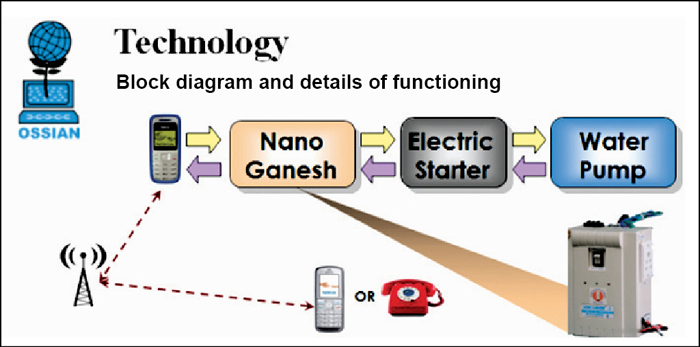Energy. A smart meter is an electrical meter that records consumption of electric energy in intervals of an hour or less and transmits this data at least every day back to the utility central system for monitoring and billing purposes.
Hence smart meters enable two-way communication between the meter and the central system using M2M technology and form a part of advanced metering infrastructure. This leads to a smart grid which is a modernised electrical grid that uses ICT to collect, interpret and act on information—such as demand pattern of consumers and supply pattern of the utility providers in an automated manner.
Time-of-day pricing, demand management, load balance and load optimisation help to improve the efficiency, reliability, economics and sustainability of the production and distribution of electricity.
M2M can also raise energy efficiency levels with regards to production and transmission, and hence further bring down CO2 emissions by enabling usage of more renewable fuel resources.
It is estimated that M2M could save more than 2.0Gt of carbon dioxide emissions by 2020 in the energy sector alone by enabling the adoption of ‘smart grid’ technologies for both small and large-scale users, including smart meters and demand response systems.
Transport. In the transport sector, M2M applications range from the simple fleet management of personal as well as commercial vehicles, maritime cargo shipping management to the more sophisticated surface transport GPS systems that adapt to varying road conditions (such as heavy road congestion ahead in the journey) to suggest substitute routes.

Route optimisation of personal and commercial vehicles results in cutting down unnecessary driving, less wastage of fuel and subsequently lower GHG emissions. BCG & GeSI estimate that M2M apps could save almost 1.9Gt of CO2 emissions by 2020 in the transportation sector by optimising routes of planes, trains, trucks and ships, and ensuring that people and goods are moved as efficiently as possible.
In case of passenger vehicles, different ride-sharing and personal transport optimisation companies that use M2M are swiftly achieving credibility and market share, thus bringing down the total number of vehicle kilometres travelled.
Better fleet-management systems mean improved vehicle diagnostics, higher vehicle lifespan and lower operating expenditure. M2M can also help in inventory management to bring down losses by eliminating deadheading, for example, return journeys made by empty or underutilised vehicles.
Real estate. By using M2M technologies, it is possible to increase energy efficiency in the built environment without inviting capital expenditure and infrastructure changes.
M2M enables development of extensive and sophisticated building management systems, which monitor various parameters, such as the outside temperature and wind velocity. These systems result in higher security and lower costs, for example, by switching lights and machines on and off automatically. Time is also saved as human intervention is minimised. For example, M2M systems controlling the ventilation and fire systems are set in such a manner that they work optimally at all times.
Architects have started using sensors that capture site-specific data and send it back to the office where the analytic software helps to maximise the potential efficiency of a building in blueprint drafting. M2M can reduce CO2 emissions by as much as 1.6Gt by 2020 enhancing the energy efficiency of building systems which include heating, cooling, ventilation, lighting, electronics and appliances and security systems.
Agriculture. Lately, we have been seeing deviations in climate and unexpected floods and typhoons. Our agricultural sector is threatened by these and thus demands a change in the manner we grow, harvest, transport and store food.
M2M can help bring down the methane emissions which are produced from cattle digestion (enteric fermentation) by monitoring cattle health and optimising their grazing patterns.
Remote monitoring of soil conditions, smart farming and smart watering are some other ways by which M2M technologies can help reduce GHG emissions. These come under the genre of ‘precision agriculture.’ For example, tractors that have M2M-enabled auto-steer technologies can be mapped with high precision in terms of their location in the field. They can then automatically reference that data with information on crop aspects, such as soil and water quality from other sensors and use water and fertilisers very accurately over each square metre of the field with almost zero wastage.
There are also savings in fuel consumption as tractors are used only where and when they are really required. A great example of M2M technology at work in the farms in India is NanoGanesh—a device that enables farmers to switch on irrigation pumps used for watering crops in remote locations using their mobile phones along with a mobile modem that attaches to the starter of the irrigation pump. This is a big boon for the farmers who had to walk several kilometres to their fields to switch on or switch off their water pumps. Nano Ganesh allows farmers to remotely check to see that there is electricity, and to automatically turn the pump on or off.






